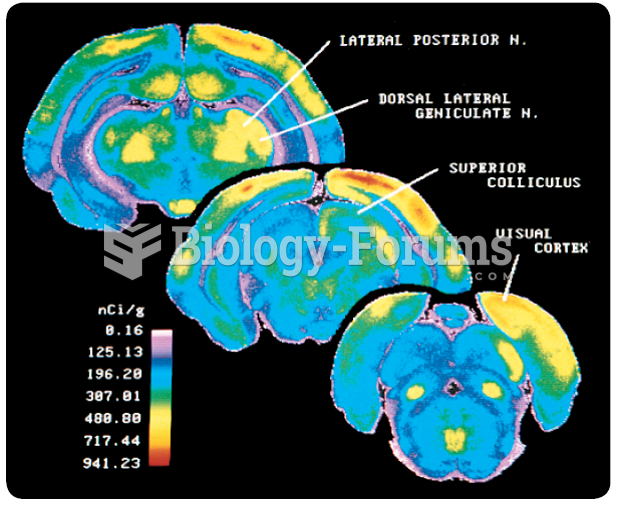|
|
|
Atropine, along with scopolamine and hyoscyamine, is found in the Datura stramonium plant, which gives hallucinogenic effects and is also known as locoweed.
The lipid bilayer is made of phospholipids. They are arranged in a double layer because one of their ends is attracted to water while the other is repelled by water.
Before a vaccine is licensed in the USA, the Food and Drug Administration (FDA) reviews it for safety and effectiveness. The CDC then reviews all studies again, as well as the American Academy of Pediatrics and the American Academy of Family Physicians. Every lot of vaccine is tested before administration to the public, and the FDA regularly inspects vaccine manufacturers' facilities.
If you use artificial sweeteners, such as cyclamates, your eyes may be more sensitive to light. Other factors that will make your eyes more sensitive to light include use of antibiotics, oral contraceptives, hypertension medications, diuretics, and antidiabetic medications.
Multiple experimental evidences have confirmed that at the molecular level, cancer is caused by lesions in cellular DNA.
 The 2-deoxyglucose technique. The accumulation of radioactivity is shown in three frontal sections ...
The 2-deoxyglucose technique. The accumulation of radioactivity is shown in three frontal sections ...
 The paired-image subtraction technique, which is commonly employed in cognitive neuroscience. Here ...
The paired-image subtraction technique, which is commonly employed in cognitive neuroscience. Here ...
 Mobilize shoulders with “cat paw” technique. Place a hand on each shoulder to establish contact. ...
Mobilize shoulders with “cat paw” technique. Place a hand on each shoulder to establish contact. ...




